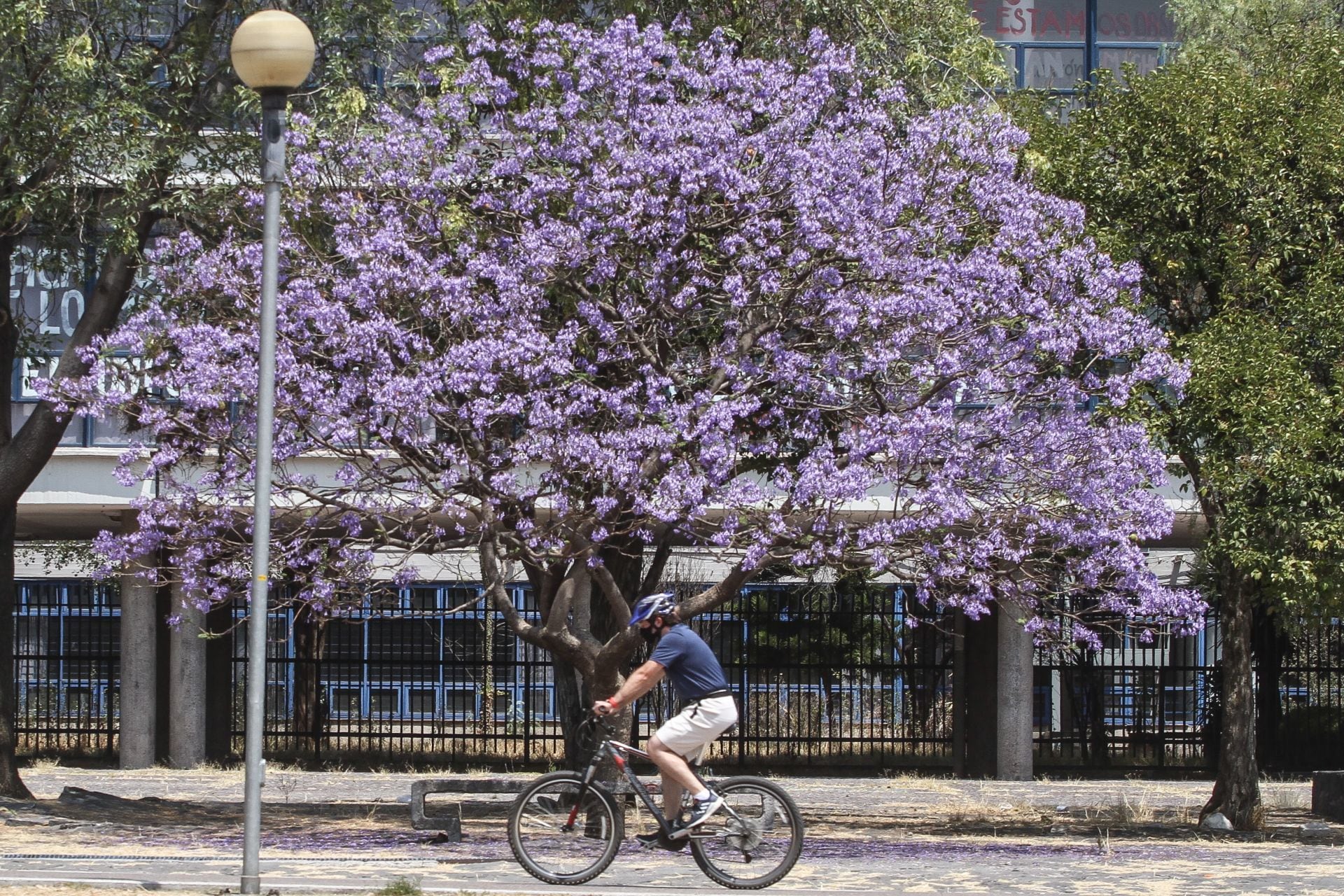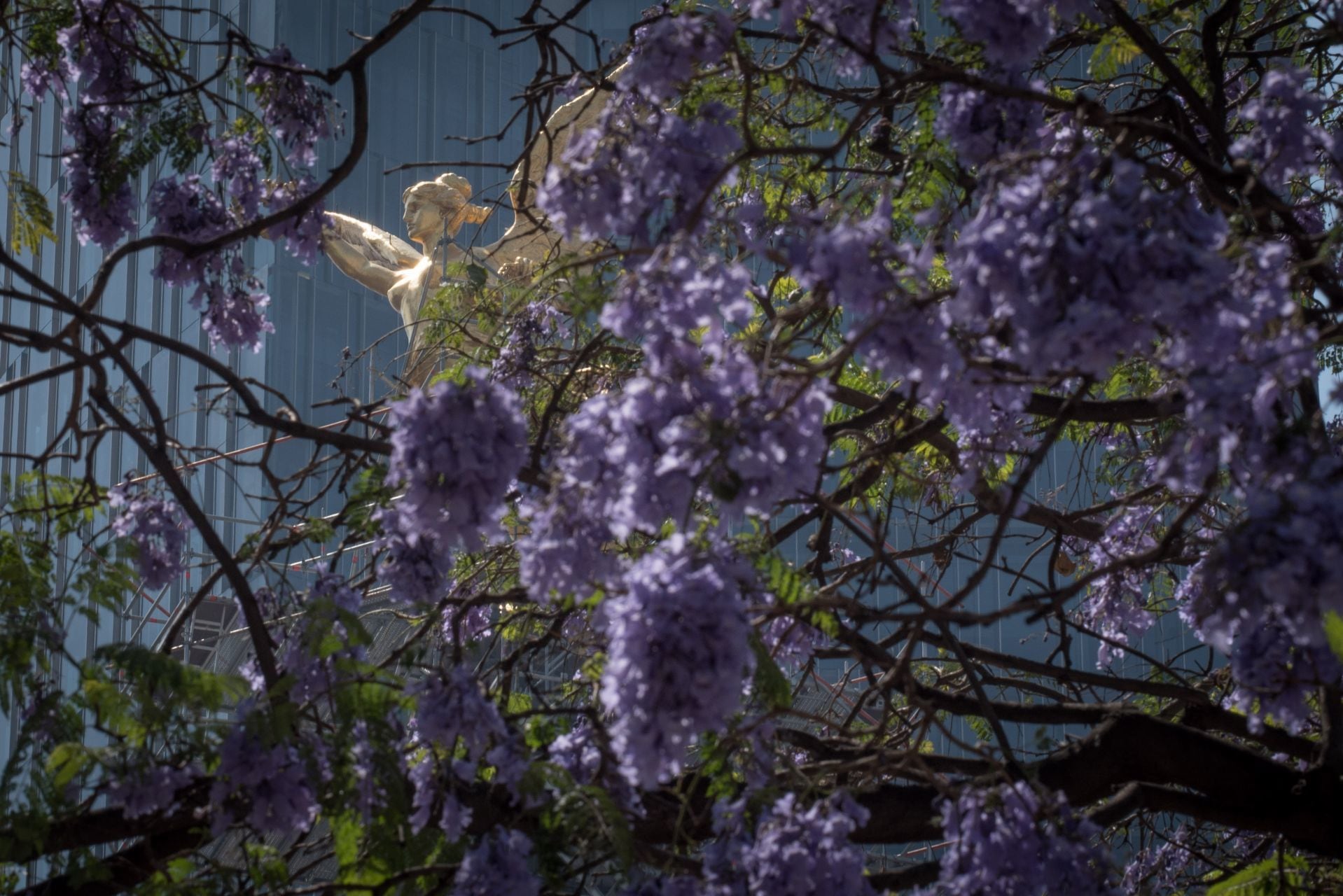
Jacaranda trees are a very representative element of Mexico City during the spring, however, they are not native to the country.
Jacarandas are native to Brazil where they are called Jacaranda. According to Marcelo Rodrigo Pace, a researcher at the Institute of Biology of the National Autonomous University of Mexico (UNAM), they were later planted in Peru. His arrival in Mexico was thanks to two Japanese foreigners: Tatsugoro Matsumoto and his son Sanshiro Matsumoto, who came at the beginning of the 20th century and set up a gardening business in the Roma neighborhood.
First they had planned to plant cherry trees but faced the difficulty that they did not adapt to the climate of the country, for that reason they decided to plant jacarandas whose height can reach 20 meters, with a spreading crown, with lilac flowers that have nectar, they need normal care, the roots are not aggressive and their woods are of quality.

After a while, father and son Matsumoto gained popularity for their oriental garden designs and began working for the elite; they designed a Japanese garden for José Landero who owned the San Juan Hueyapan Hacienda in Pachuca, Hidalgo. They also made flower arrangements for Chapultepec Castle.
After the Mexican Revolution, Matsumoto received the order of the president of that time Pascual Ortiz Rubio to plant jacarandas around the main streets of the capital. In the context of the Second World War, due to their relationship with the government, they obtained citizenship, later they bought the former Temixco Hacienda in Morelos, which they also opened as a refuge for the Japanese persecuted by the United States.
Miguel Ángel de Quevedo or “the Apostle of the Tree”
Another story of the introduction of jacarandas is attributed to Miguel Ángel de Quevedo, who was a Mexican researcher and engineer who throughout his life studied and dedicated himself to the care of flora in Mexico City.

He also studied the climate and soil conditions to introduce different species of trees into Mexico, among which were the jacarandas he met in Veracruz and saw that they were used for the properties of their high quality wood. According to the book by the Autonomous Metropolitan University (UAM) Mexico City Trees, they were brought from Manaus, Brazil and the first place to be covered in their lilac colors was the Port of Veracruz.
Quevedo was the one who founded the Coyoacán nurseries, protected the city's natural reserves and it is because of him that there are several parks. It was the impetus to plant jacarandas in the Roma, Del Valle colonies, on Paseo de la Reforma, Mexico Park in La Condesa, in La Alameda, Mixcoac and Coyoacán.
Places to admire jacarandas
* Whether for a photo shoot, for a walk or a bike ride in the middle of these trees that can be found in:
* España Park in Colonia Condesa.
* Mexico Park in La Condesa.
* In Ciudad Universitaria, UNAM.
* In the vicinity of the Chapultepec Forest.
* On Paseo de la Reforma Avenue near Lomas de Chapultepec.
* In the corridors of the Tlalpan Forest.
* In the Alameda Central.
* On Veracruz Avenue in La Condesa.
KEEP READING:
Últimas Noticias
Debanhi Escobar: they secured the motel where she was found lifeless in a cistern
Members of the Specialized Prosecutor's Office in Nuevo León secured the Nueva Castilla Motel as part of the investigations into the case

The oldest person in the world died at the age of 119
Kane Tanaka lived in Japan. She was born six months earlier than George Orwell, the same year that the Wright brothers first flew, and Marie Curie became the first woman to win a Nobel Prize

Macabre find in CDMX: they left a body bagged and tied in a taxi
The body was left in the back seats of the car. It was covered with black bags and tied with industrial tape
The eagles of America will face Manchester City in a duel of legends. Here are the details
The top Mexican football champion will play a match with Pep Guardiola's squad in the Lone Star Cup

Why is it good to bring dogs out to know the world when they are puppies
A so-called protection against the spread of diseases threatens the integral development of dogs




